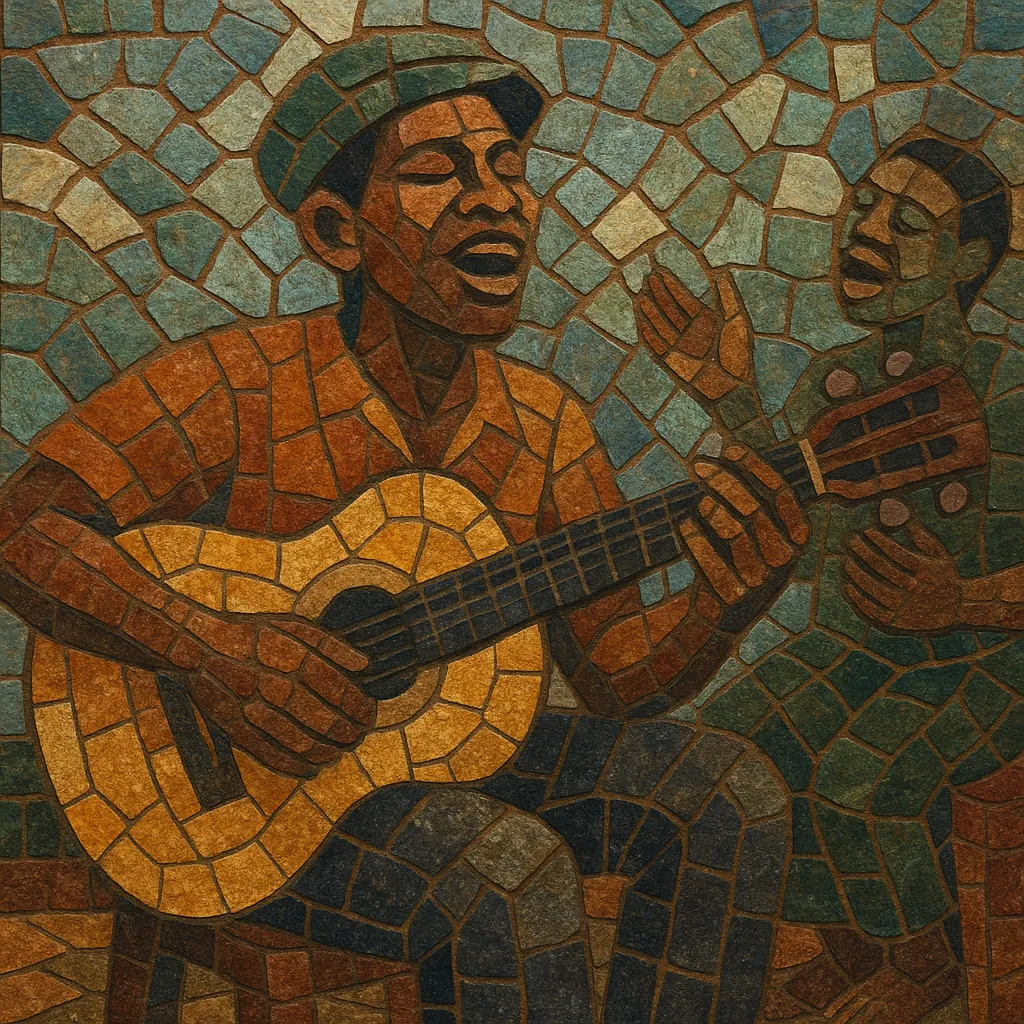Omutibo is a lively, thumb‑led acoustic guitar style from western Kenya, especially among Luhya communities. It is characterized by percussive, syncopated fingerpicking that turns the guitar into both a melodic and rhythmic instrument, often supporting playful, proverbial, and socially observant lyrics.
Typically performed solo or in small ensembles, omutibo features a driving alternating‑bass pattern with palm‑muted thumps, bright treble riffs, and off‑beat accents that mimic local hand‑drum and dance rhythms. Vocals—often in Luhya languages and Swahili—use call‑and‑response and communal refrains, encouraging audience participation and dancing.
Omutibo took shape in the 1950s in western Kenya (Luhya region), as acoustic guitarists adapted local dance rhythms to the guitar. George Mukabi is widely credited with refining the style’s distinctive thumb‑led, percussive fingerpicking, marrying village dance grooves with the portability and expressive range of the steel‑string acoustic guitar.
Kenyan players heard Congolese rumba/soukous on radio and records, borrowing its lilting guitar fluency and call‑and‑response ethos, while grounding it in Luhya rhythmic patterns and song forms. At the same time, exposure to imported acoustic blues and other fingerstyle idioms encouraged independent, thumb‑driven bass lines and treble syncopation.
Following early 45 rpm recordings and broadcasts, omutibo spread through markets, beer halls, and rural gatherings. Groups such as Abana Ba Nasery (with Shem Tube and Justo Osala) brought the style sharper ensemble interplay, keeping the guitar at the rhythmic center while adding voices and light percussion. The repertoire grew to include topical songs, morality tales, and witty commentary on everyday life.
Omutibo’s percussive fingerpicking and social, participatory performance practice shaped later Kenyan guitar music and informed regional acoustic traditions. Reissues and field recordings have renewed global interest, and contemporary Kenyan artists continue to draw on omutibo’s danceable swing, communal hooks, and storytelling approach.


